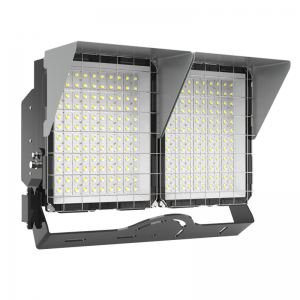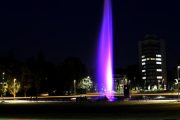the Lifespan of Fixtures
Lamp life refers to the time from the start of use to the death of the lamp. For the lifespan of LED lamps, major manufacturers are now increasing the lifespan of the light source over how many hours, and calculating the uniformity of illumination.
Take the point directly below a light source, make a vertical line, and pass two points AB on both sides of the traffic lane. Illumination uniformity is another very important criterion for road lighting. Results: The illuminance of the high pressure sodium lamp was 65.77Lux, and the uniformity was 0.38. The LED light source has good color rendering and can restore the actual color of the object well, but the white light is colder.
About the Light Efficiency of LED and HPS Lights
Light effect of LED light
In 2007, the best light efficiency of LED light source can only reach 80lm/w. After the actual application of the lamps, the light efficiency is even lower. At that stage, most of the LED light sources were used as indicator lighting and landscape lighting, and were not promoted in application environments such as street lighting.
However, some manufacturers and a few departments are hard on it for the sake of profit, which leads to the failure of practical application. Such manufacturers still exist to this day. But this does not mean that the application of LED has always been this standard. Now the LS-ARE series light source normally shipped by LedsMaster is 170-200 lm/w.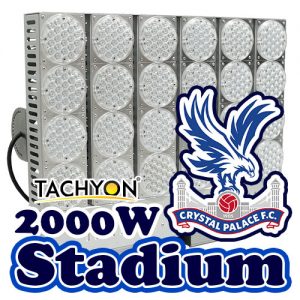
Take an LED street lamp with a light source power of 100w as an example: the initial luminous flux is 15000lm. Because the LED is unidirectional, the efficiency of the lamp is high, the loss of the lens is 10%, and the loss of the lamp is 10%. The luminous flux of the lamp is 12000lm. The total power of the lamp is 100w, so the light efficiency of this LED lamp is: 120 lm/w.
Light effect of HPS light
HPS light effect from 90-140lm/w. However, because it is 360-degree light, the light applied to the irradiation direction is very small, only 30%. Higher light utilization must be achieved by reflecting part of the light in the non-application direction. Due to the design and cost of the lamps, the efficiency of sodium lamps is only 40-45%.
Take a 250w sodium lamp as an example: the initial luminous flux is 30000lm, and the luminous flux of the lamp is 13500lm. The actual power of the 250w sodium lamp is 300w (this will be explained later), so the light efficiency of the 250w sodium lamp is 45lm/w.
Another very big problem with sodium lamps is that the lighting continuity of sodium lamps is very poor. When the sodium lamp is working, the temperature in the lamp cavity should exceed 150 degrees. In the non-working state, because of the negative pressure, a lot of dust and insects will be sucked in, which will greatly affect the light-emitting effect of the sodium lamp.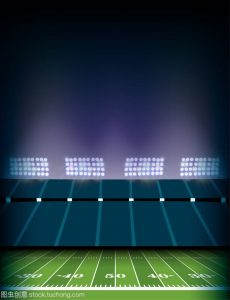
From the above results, the luminous efficiency of LED lamps at this stage is better than that of sodium lamps. With the development and maturity of LED technology, the luminous efficiency of lamps will be greatly improved.
About the Actual Wattage of LED and Sodium Lamps
The power composition of LED light source lamps: light source power + power loss = whole lamp power. Now the efficiency of LED driver can be 91% or even better, and no reactive power compensation is required.
The power of the LED lamp of the previous 100w light source: 100 + 100 * (1-0.91) = 109w. The power composition of the sodium lamp is more complicated, because the efficiency of the sodium lamp is only 0.38-0.45, and there is ineffective power. The apparent power of the 250w sodium lamp is as high as 627W without reactive power compensation. In order to solve this problem, it is necessary to increase the reactive power compensation part. At present, the on-site reactive power compensation of single lamp is generally 85%. The sodium lamp inductive rectifier loses 20%, and the electronic rectifier loses about 10%, but the cost is high and the life is short.
The lamp power of the previous 250w sodium lamp: 250 + 250 * 20% = 300w. There are also reactive power losses, line losses, transformer losses and so on on the entire lamp line. It is not added here, only the theoretically lower values are compared.
Lifetime of LED and Sodium Lamps
First of all, it is necessary to distinguish the concepts of lamp life and average life, and do not confuse these two concepts.
Lamp life refers to the time from the start of use to the death of the lamp.
The average lamp life is the time from when a batch of lamps is used until half of them die.
Life of LED Lights
For the life of LED lamps, various manufacturers are now increasing the life of the light source more than how many hours. This formulation is not scientific. The theoretical life of LED light sources is very long (provided that it is within the specified junction temperature range and under the L70 light decay standard). But the overall life of a lamp is not simply the life of the light source. The luminaire also includes the effects of the drive and lens sections. Therefore, the life of the final lamp should be limited to the shortest life-span of all lamp parts.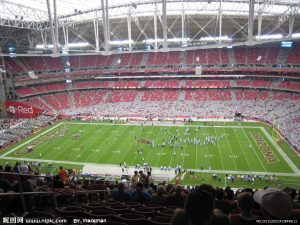
At present, the lifespan of the well-made driving power supply and the lens made of silicon material can reach 50,000 hours. The premise is that the heat dissipation of the lamps meets the requirements.
Life of HPS Lights
For the life of sodium lamps, all manufacturers are talking about the average life. Some people even put forward the lifespan of sodium lamps and said, “The average lifespan of sodium lamps for street lamps is 3 to 5 years, and energy-saving magnetic ballasts will not be less than 20 years, as well as lamps.” I doubt it.
What is the life expectancy of LED street lights? In the current state of the industry where the quality of LED lamps is uneven, I think we should first find products that meet the basic requirements of some LED lamps for practical applications, instead of seeing some very bad companies with very bad products.
Environmental Protection and Lighting Effects
The HPS light source contains metallic mercury and metallic sodium. The lifespan is short (compared to LEDs), and the subsequent disposal of waste products will pollute the environment. The LED does not contain the above and the EU ROHS environmental protection directive prohibited harmful substances.
- Glare,
The main problem is the design of lamps. Whether it is sodium lamps or LED lamps, there will be glare problems. This requires improvement in the light distribution design of lamps. It has little to do with the light source itself.
- Color rendering.
The sodium lamp has poor color rendering and poor color reduction of the object itself, which is not conducive to people’s judgment of the depth of the surrounding environment. The LED light source has good color rendering and can restore the actual color of the object well, but the white light is colder.
- Transmittance to light.
In a foggy day, the headlights are required to turn on the fog lights and drive slowly. The function of the fog lights is not for lighting, but only as an indication.
For road lighting, using a light source with good penetration is only able to look up to see a yellow light spot, which has no practical effect on the lighting in front of the road.
- For illuminance.
Illuminance is one of the important criteria for judging lighting effects. Because of the light distribution problem of sodium lamps, the illumination uniformity is not high. For better illumination uniformity and effect, many units are often over-illuminated in practical applications.
Conclusion
The illuminance of HPS.
The illuminance of lights is over-illuminated, but the illuminance uniformity fails to reach the standard of 0.4 for road lighting. It does not mean that it is not bright enough, but that there are bright and dark areas (relative).
The illuminance of LED
The illuminance of LED street lights meets the requirements, but the uniformity of the same illuminance is not up to the standard. There is a problem with the light distribution of this product. However, even if the light distribution requirements are met, the actual brightness of the 400w sodium lamp cannot be achieved, because the sodium lamp is excessive lighting.
For illumination uniformity.
Illumination uniformity is another very important criterion for road lighting. In the current national road lighting standard, the illuminance uniformity standard for branch roads is 0.3, secondary roads are 0.35, and main roads are 0.4.
The LED light source has a rectangular light spot after light distribution, which is very suitable for road lighting applications. In the case of meeting the illumination requirements, the illumination uniformity can reach 0.8, which is much higher than that of sodium lamps.
The light distribution of sodium lamps is formed by reflection. On the one hand, most of the light is lost. And the other part is difficult to achieve very good uniformity. That is, it can meet the road lighting standards. When this standard was formulated, LEDs had not yet come out, and these data were determined according to the best data that lighting could achieve at that time.
About heat dissipation.
The heat dissipation of the LED determines the life and light decay of the lamp. Because the state strongly supports the LED lighting industry, this industry is full of development opportunities.
Now, many companies that were originally in the electronic cooling industry have entered the LED lighting industry. Such as: Foxconn, Opus, avc, coolermaster and so on. Their rich experience in electronic heat dissipation has brought new heat dissipation concepts to LED lamps and lanterns. Basically, it has reached the requirements of LED on the junction temperature.



